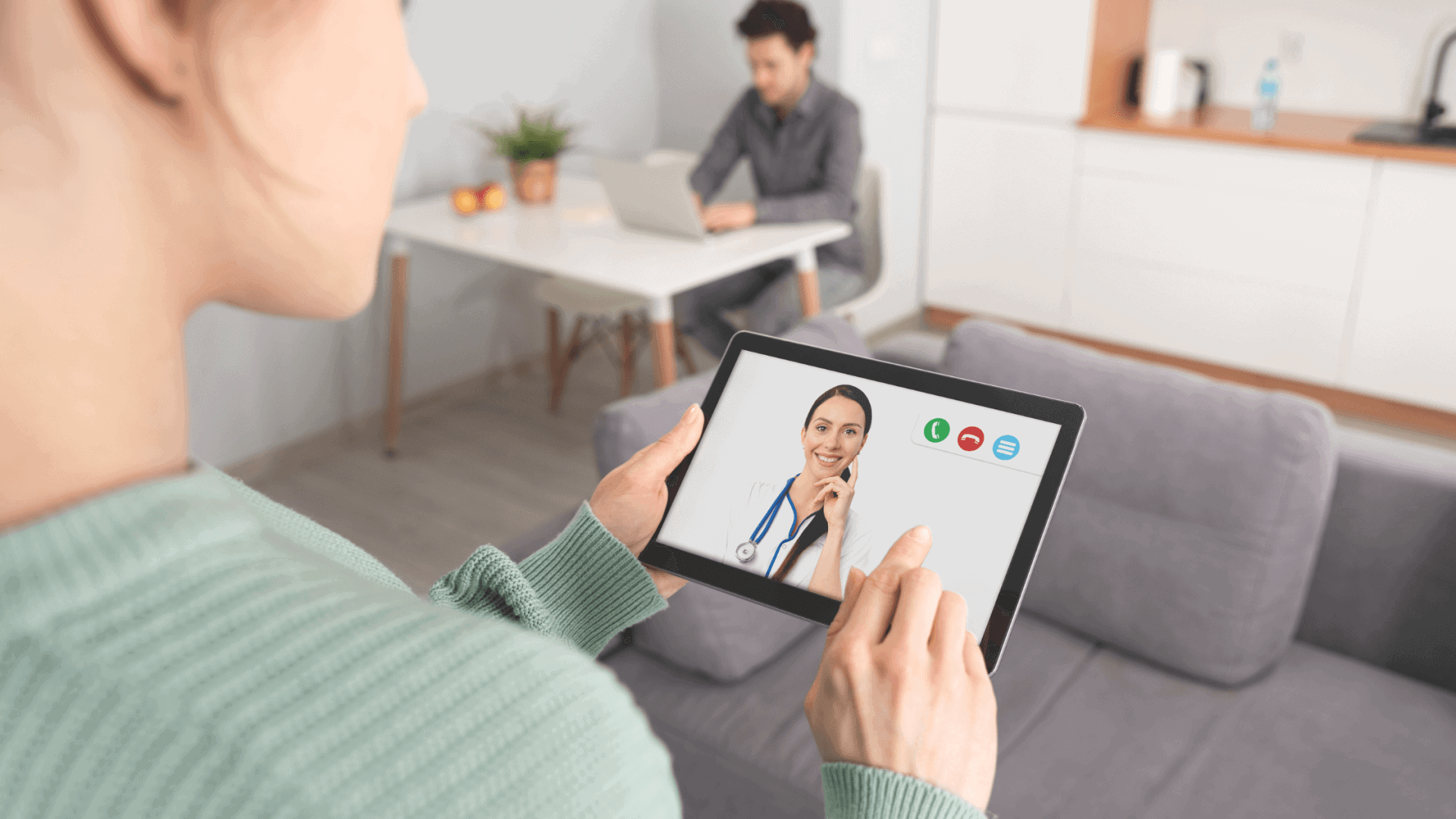Expand Your Practice Without Renovating: Get Telehealth

Telehealth Billing Increased 3,552% In 2020. Did You Get Your Share?
By Dr. Greg Grillo
In healthcare, most of us expect to sit in the same room with our patients. Our professions involve physical contact at some point in therapy and treatment. But today, digital touchpoints facilitate the healing process we deliver. While the COVID-19 pandemic underlined the evolution, the trend had already hit its stride the winter before. In early 2020, telehealth visits shot up 33% over the previous year. By the time the year wound down, virtual visits to primary care doctors had grown 350-fold over pre-pandemic levels .
Telehealth is here to stay, and it’s spilling over into all aspects of healthcare. Bolstered by consumer emphasis on convenience and no-contact communications, a necessity has become an expectation. And practitioners that adopt will meet the new consumer mindset. Those who don’t will look equally out of touch to Millennials, Gen Xers, and Baby Boomers.
It’s easy for hands-on practitioners to dismiss virtual visits. After all, it’s tough to adjust the cervical spine, place a filling, or perform a massage through a smartphone. But adopting an incremental mindset helps create efficiency and opportunity. If we can expand or move just 5% of our services to a telehealth platform, we open capacity and access while creating a growth path.
The majority of initial utilization centered around traditional primary care visits. Many patients experienced their first online visit with a provider during the pandemic, but that solidified a new expectation. Half of patients said they would switch healthcare providers if they were able to access telehealth regularly.
And how much do patients value this option? The pocketbook speaks. Patients indicate they’re willing to pay for the convenience. Over 20% said they’d use telehealth even if their insurance didn’t cover it.
Consider The Opportunities Across Healthcare
- A 2016 survey revealed that 64% of respondents suffered from some form of eye or vision concern, but only 13% had gone for an eye exam. Less than one-third of school-aged kids had an eye exam within the past two years. Today’s technology allows remote comprehensive eye exams and prescriptive therapy. What happens if a conventional optometry practice adopts a tele-optometry segment to their practice?
- During COVID-19, patients stayed home out of necessity. But some patients continually struggle with mobility, transportation, or social anxiety. Although they’d benefit from an in-office visit, don’t expect to see them soon. A virtual visit gives a chiropractor a chance to connect with these patients and provide tips to help relieve pain and modify behaviors that aggravate pain. Quick visits with new patients create opportunities for more in-person appointments and stronger relationships with existing clientele.
- Over half of people over age 18 suffer from a musculoskeletal injury every year, but less than 10% of them seek care. When given the opportunity, physical therapists rely on a series of visits to facilitate recovery and usually prescribe home exercises. A telehealth strategy can significantly enhance efficiency by adding a platform to supplement connections with patients.
- A massage therapist knows that effective therapy relies on a comprehensive approach. As an additional service, a provider can offer virtual sessions that coach on ergonomics, exercise, nutrition, stress management, and sleep health.
- Few professions rely on detailed procedures as dentistry does. But anxiety keeps 22% of people from seeking oral care , and some people are paralyzed by the smells and sounds of a dental office. Teledentistry provides a stepping stone for some people to discuss their concerns and gather critical insights that move them towards treatment.
Long-Standing Problems With a New Solution
Regardless of our fields, we face diametric problems as healthcare providers: we’re either looking for more new patients or wondering where to put them in our physical spaces. Telehealth solutions offer a resolution that covers both ends of the spectrum. New patients appreciate the convenience and access, and they expect to find it now. Lowering the barriers of entry to our practices opens doors to additional populations. A new patient may stay virtual, or they may intersperse their care with physical visits.
A practice that needs extra space to increase productivity faces a dilemma. If there’s room for expansion, clinical space costs a small fortune to add. An existing 10X10 room can cost up to $100,000 to equip as a dental operatory. New commercial construction can easily cost $300/square foot for any purpose. While the investment enhances production, what if we start with telehealth services and see what we achieve?
Increased profitability starts by shifting our paradigms. As a provider, I may immediately think about the procedures I can’t do through a screen. But the incremental mindset tells us that if we move 3-4 hours of consultations, post-op visits, and triage appointments to a virtual setting weekly, the physical space opens by the same increment. A telehealth visit may take place between in-office patients or right before lunch. One more office visit that day adds up to 4-5 more that week, or a couple dozen that month.
You just “built” new physical space for pennies on the dollar.
Ready to Lead Where Patients Want You To Go?
Technology advances faster than we adapt, but innovative healthcare providers see the tidal wave and pivot. We benefit when consumers equate our brands with convenience and discover experiences that stand out against the competition. Find out how telehealth can provide your practice with opportunities for incremental growth and market positioning. Join me for an on-demand webinar, TELEMEDICINE: A RISING TREND IN DENTISTRY , where I discuss how my practice has used this technology.
[dr_grillo_bio]



